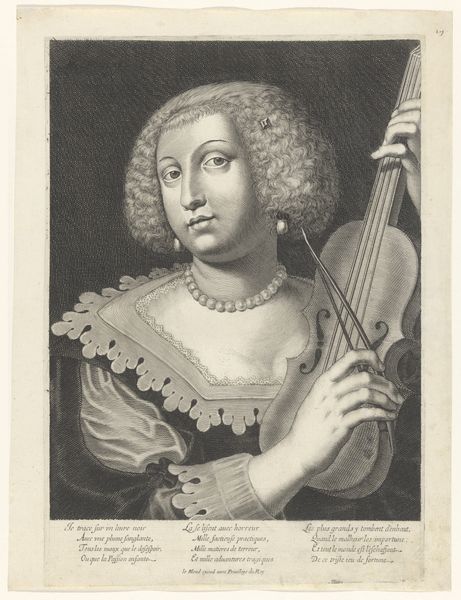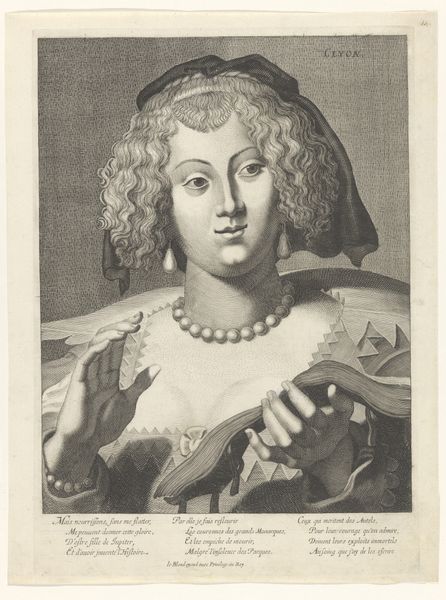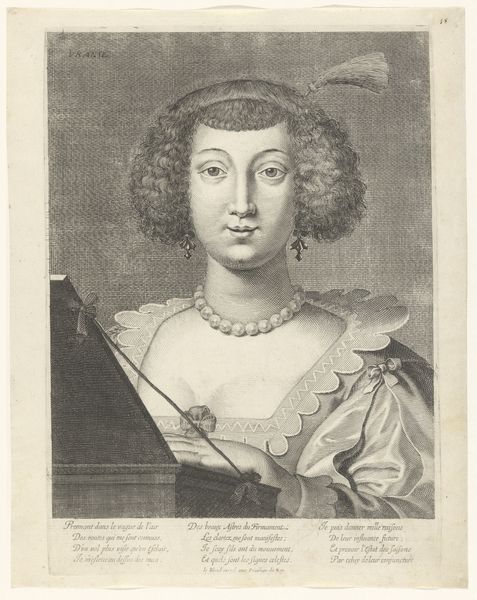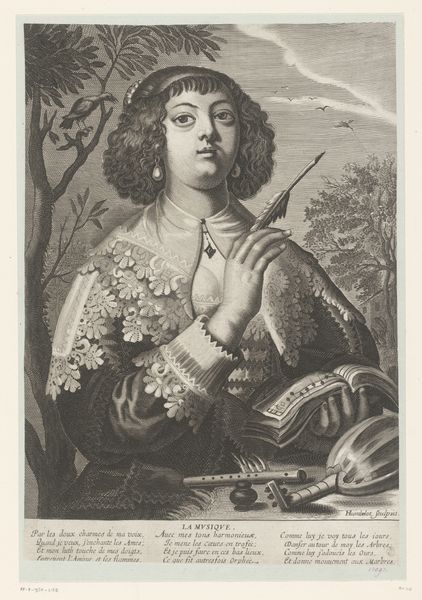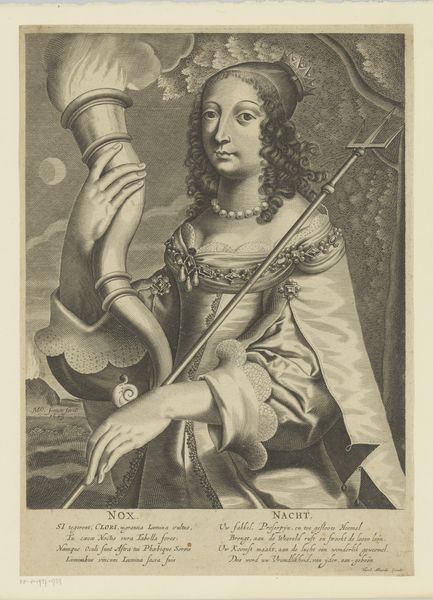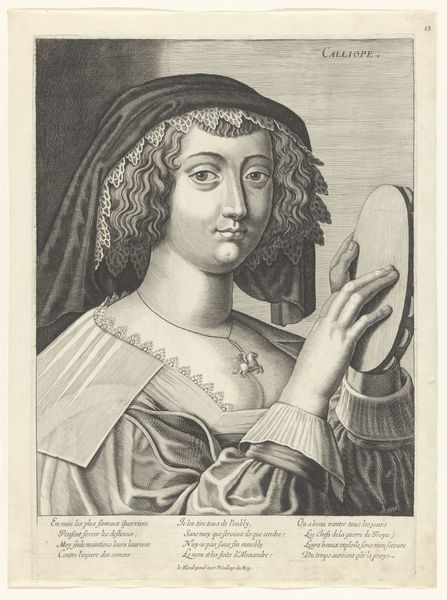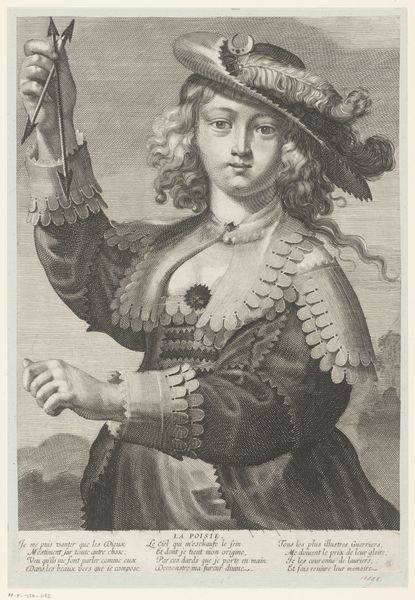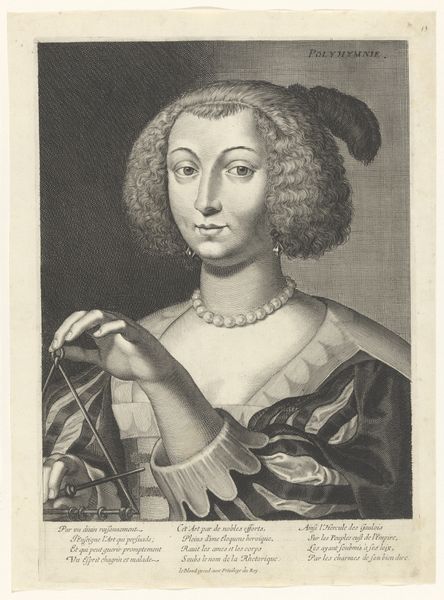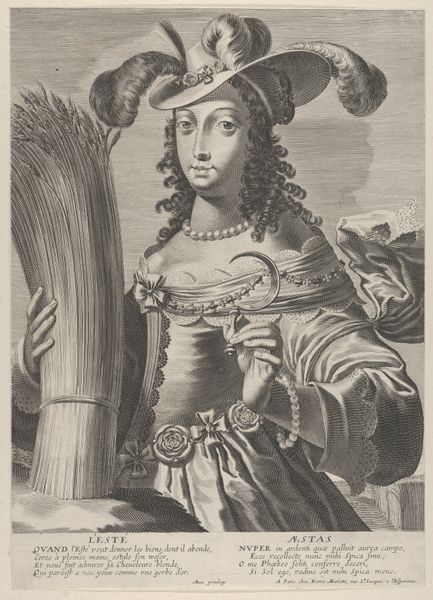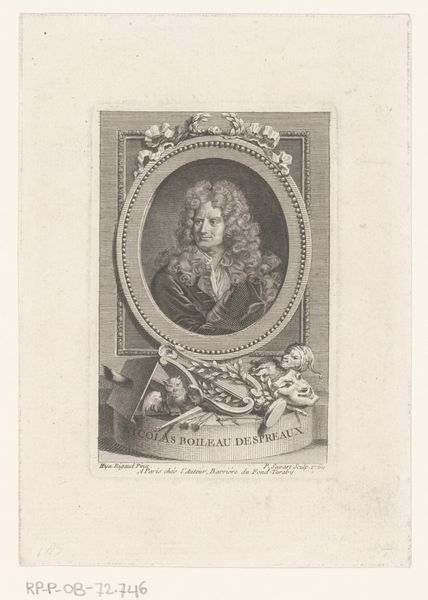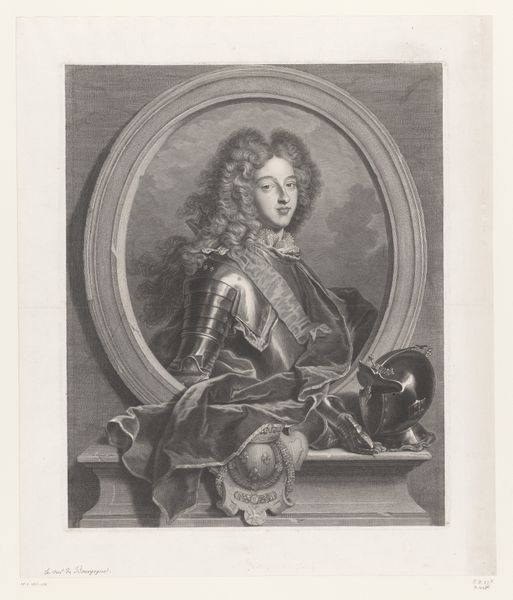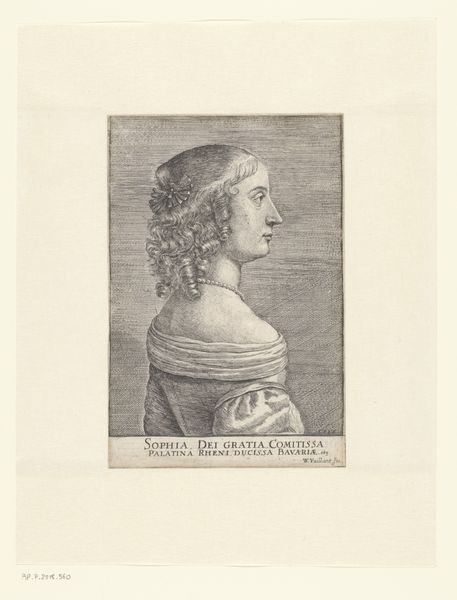
print, engraving
#
portrait
#
baroque
# print
#
genre-painting
#
engraving
#
calligraphy
Dimensions: height 320 mm, width 280 mm
Copyright: Rijks Museum: Open Domain
This print of Thalia, the muse of comedy, was made by Jean Leblond in the 17th century using engraving. Note the artist's skilled handling of line to create texture and form, especially in the rendering of her dress, hair, and the lute. Engraving is an intaglio process, where the design is incised into a metal plate, traditionally copper. The incised lines hold ink, and the image is transferred to paper under high pressure. This technique demanded intense labor and skill; each line meticulously carved by hand. The precision and detail achievable through engraving made it ideal for reproducing images and disseminating information. Prints like these played a crucial role in spreading visual culture. They democratized art by making it accessible to a wider audience, reflecting the burgeoning print market and the rise of visual literacy. The labor-intensive nature of engraving also highlights the complex relationship between art, craft, and commerce in the early modern period. It reminds us that art-making is always embedded in social and economic contexts.
Comments
No comments
Be the first to comment and join the conversation on the ultimate creative platform.
